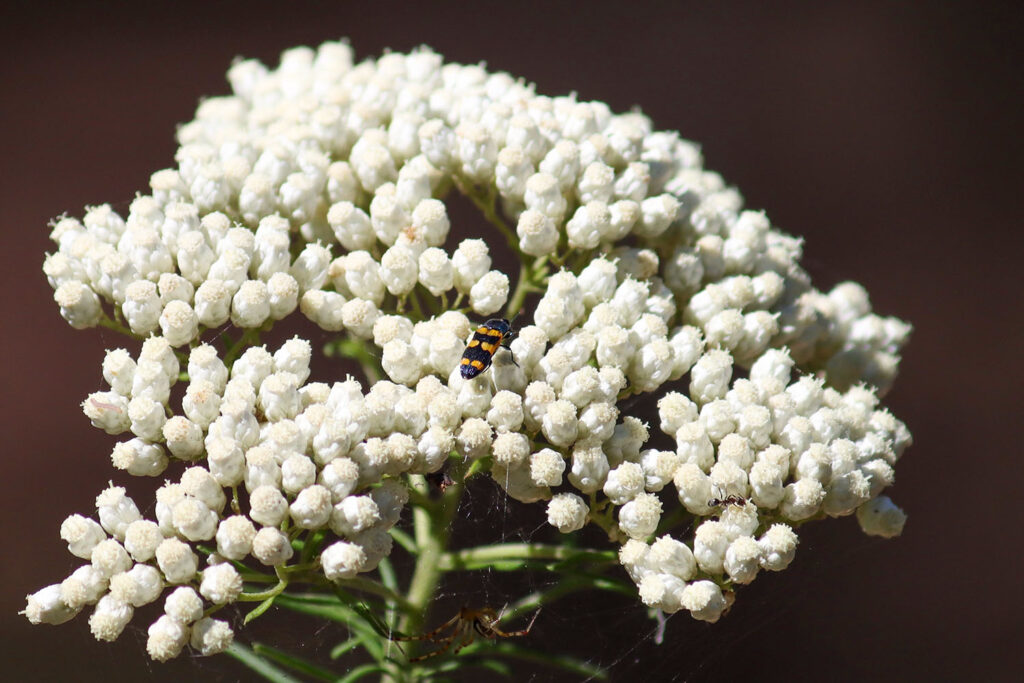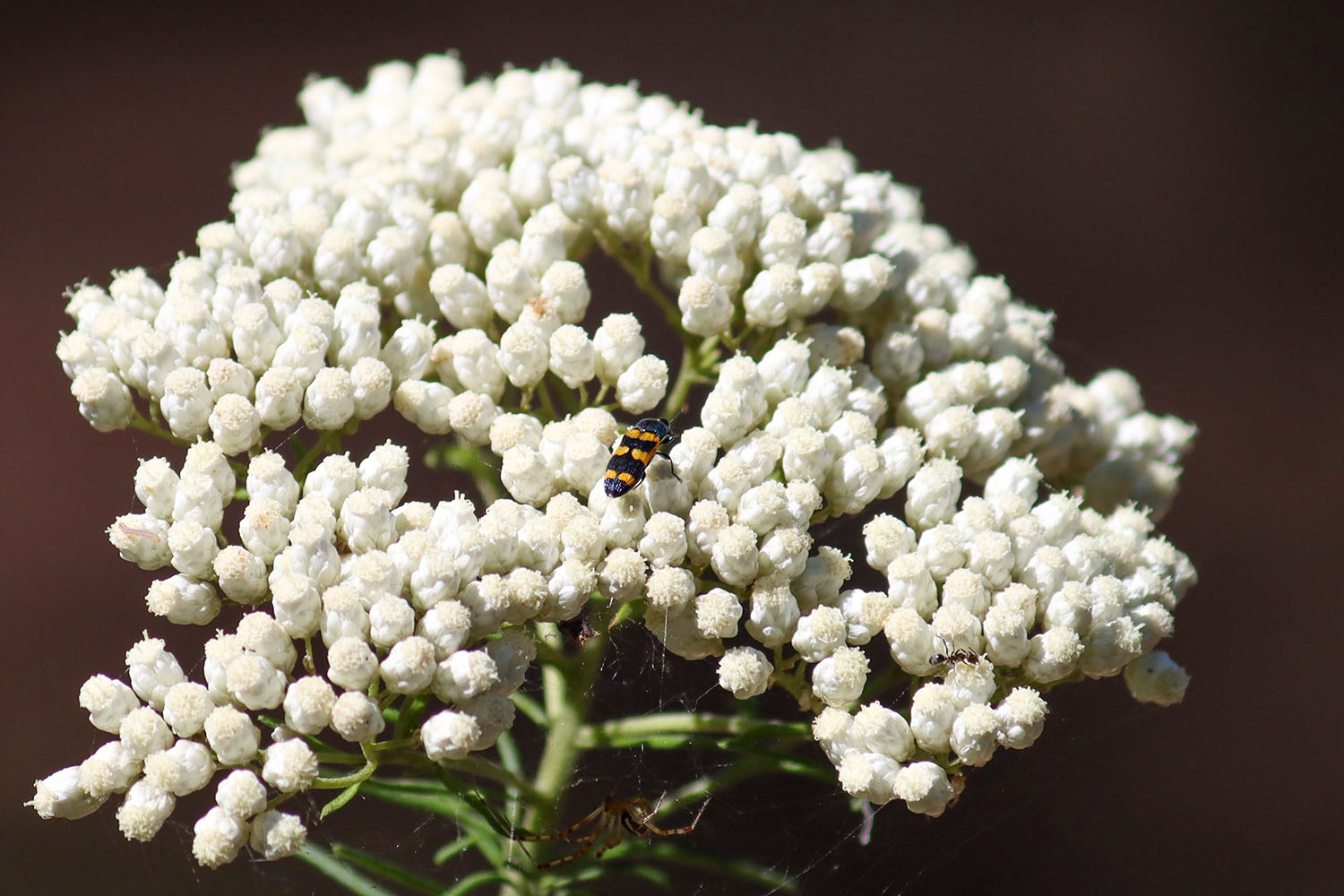Rice Flower

This plant is not hard to find in Tamborine Village. Ozothamnus diosmifolius is flowering beautifully this year. From my back patio It looks like the bushes are snow-topped as they cluster around our dam.
The name comes from the Greek Ozo “to smell” and Thamnus “shrub” referring to the pungent smell of crushed foliage. Diosmifolius refers to the similarity of the leaves to plants in the Diosma genus, like the “Confetti Bush” which was popular in the 1980s. The common names, Rice Flower or Sago Flower, refer to the closed buds which resemble the small white grains.
It was first described by a French botanist in 1804 and since then has been renamed at least twice. For some time it was in the same genus as Strawflowers, Helichrysum.
A Florist’s Delight
This plant has been used as an alternative to the ever-popular Baby’s Breath for filling out flower arrangements with bubbles of white or pink. The cut flowers last a long time in water before wilting. It also dries well and keeps its colour for a long time. This has made it popular in bridal flower arrangements.
Flowers range from white to dark pink and recently a yellow variety called “gold dust” has been propagated and distributed through nurseries in New South Wales. Interestingly, this plant is in the Daisy family and is also related to Marigolds and Lettuce.
A Tall Leggy Shrub
This plant generally grows to between 1.5 metres and 2 metres tall, however, the Australian National Botanic Garden records indicate that there have been specimens found up to 5 metres. They grow readily from seed with little preparation and are drought and frost hardy.
A Birdwatching Favourite
This lovely plant, found en masse, is popular with birdwatchers thanks to the abundant nectar. Quiet observation in a large patch can yield sightings of honeyeaters, wattlebirds, wagtails and thornbills, not to mention the jewel beetles and other pollinators.
Growing Conditions
These shrubs favour hillsides and rocky outcrops with well draining soil. They will grow in full sun or partial shade, with coloured flowers fading quickly to white in full sun. It has a number of cultivated forms and is said to respond well to pruning. Having said that, flower growers consider it “past useful” after only three years of growth.
Written by Jane Frost
www.janegrowsgardenrooms.garden
